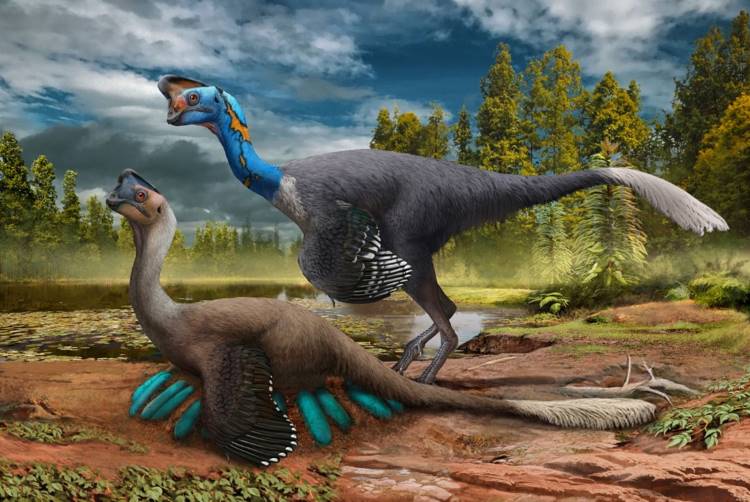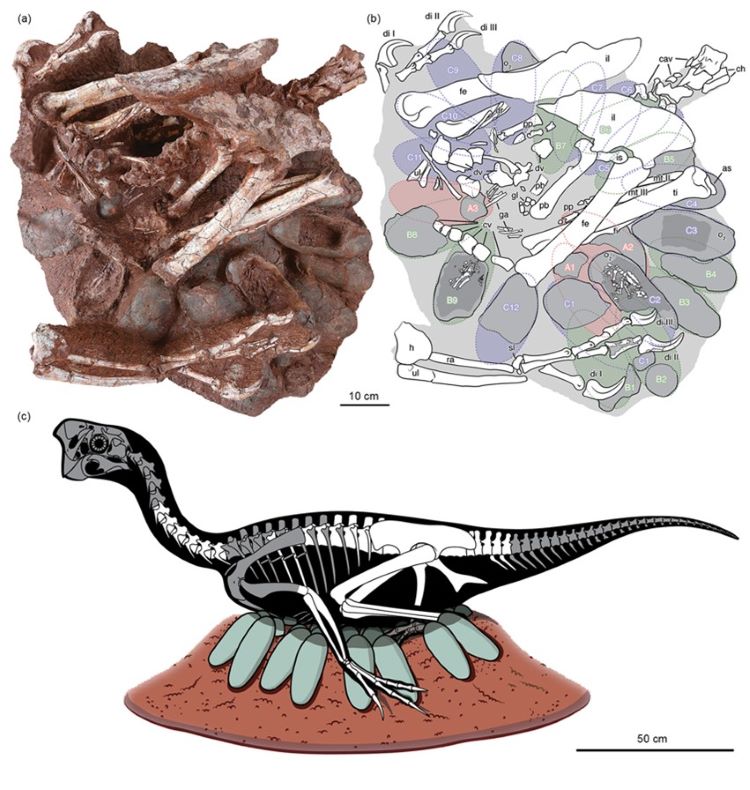Paleontologist Shundong Bi, Department of Biology, and collaborators have discovered a dinosaur preserved sitting atop a nest of its own eggs that include fossilized babies inside. The scientific paper describing the discovery was recently published in the journal Science Bulletin.
The fossil in question is that of an oviraptorosaur, a group of bird-like theropod dinosaurs that thrived during the Cretaceous Period, the third and final time period of the Mesozoic Era (commonly known as the Age of Dinosaurs') that extended from 145 to 66 million years ago. The new specimen was recovered from uppermost Cretaceous-aged rocks, some 70 million years old, in Ganzhou City in southern China's Jiangxi Province.
"Dinosaurs preserved on their nests are rare, and so are fossil embryos. This is the first time a non-avian dinosaur has been found, sitting on a nest of eggs that preserve embryos, in a single spectacular specimen," explained Bi.

An attentive oviraptorid theropod dinosaur broods its nest of blue-green eggs while its mate looks on in what is now Jiangxi Province of southern China some 70 million years ago. Artwork by Zhao Chuang.
"This kind of discoveryin essence, fossilized behavioris the rarest of the rare in dinosaurs," explained Matthew Lamanna of the Carnegie Museum of Natural History. "Though a few adult oviraptorids have been found on nests of their eggs before, no embryos have ever been found inside those eggs. In the new specimen, the babies were almost ready to hatch, which tells us beyond a doubt that this oviraptorid had tended its nest for quite a long time. This dinosaur was a caring parent that ultimately gave its life while nurturing its young."

An oviraptorid specimen consisting of an adult skeleton preserved atop an embryo-bearing egg clutch
Read more about this discovery on IFL Science and TribLive.